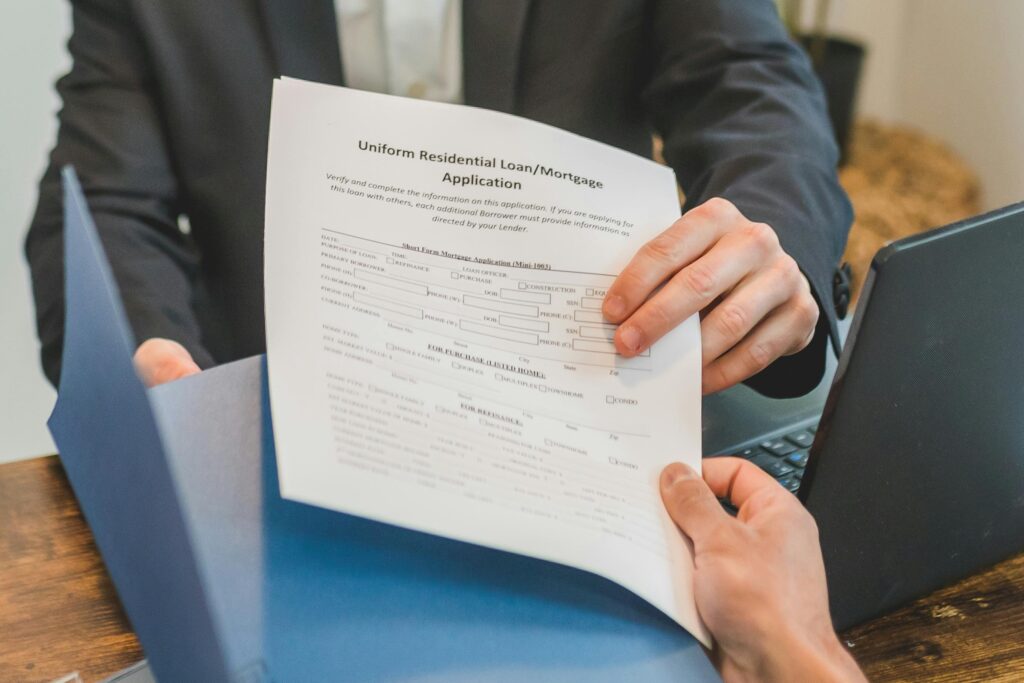Let’s be honest. Writing a patent sounds painful. It feels like something only lawyers should touch. Full of rules, weird words, and long forms. Most startup founders or engineers want to run in the opposite direction. And that makes sense. You didn’t build your startup to get stuck in legal documents. You built it to solve real problems with smart technology.
Why Most People Avoid Patents (And Why That’s a Problem)
Fear, confusion, and myths are killing real innovation
Let’s dig into this. Most founders don’t avoid patents because they don’t care about protecting their work. They avoid them because the process feels like a trap.
There’s this quiet fear that if you mess it up, you’ll waste money, waste time, and end up with nothing to show for it.
That fear isn’t random—it’s been baked into the old-school patent process for decades. The system is slow.
The rules are vague. And if you make the wrong move early, fixing it later can be expensive or even impossible.
But the real problem? While you’re hesitating, the window closes. Patents are first-come, first-serve.
If someone files before you—even with a weaker version of your idea—they can box you out.
You might end up locked out of your own market. That’s not dramatic. That’s how patent law works. So waiting isn’t neutral—it’s risky.
The patent process was never designed for builders
Traditional patent systems weren’t created with startup founders in mind. They were built for big companies with in-house legal teams.
That’s why the process feels foreign. Everything about it—from the vocabulary to the timelines to the filing portals—feels like a bad fit for people who move fast and think in product terms.
So what happens? Smart founders either avoid it altogether or toss it to an expensive firm and hope for the best.
That approach often leads to generic patents that don’t really protect the core of the tech. The worst part?
By the time most founders find out their patent isn’t useful, it’s too late to fix it. That mistake costs more than money. It can cost momentum, trust, even entire business lines.
Start protecting your IP without stopping your build
So how do you break this cycle? Here’s the truth: the patent process isn’t broken. It’s just mismatched.
What’s needed is a smarter approach—one that meets founders where they are. You shouldn’t have to become a lawyer or pause your roadmap to get protection.
You should be able to capture your innovation while it’s still fresh, file fast, and still end up with something strong.
One way to do this is to shift your mindset. Stop thinking of patents as one giant form to fill out. Think of them as part of your product story.
Every new feature, workflow, or algorithm is a chance to capture value. Start documenting these details in plain English.
Keep track of what makes each part of your system work better than what came before.
Next, start early. You don’t need a finished product to file. You just need a working concept and a clear explanation.
If you can describe how it works and what makes it different, you can start. AI tools like PowerPatent are designed to help you do exactly that.
You bring the idea. The AI helps shape it into something you can file. The earlier you do this, the safer you are.
Another smart move: make patenting part of your sprint process. Set time every few weeks to review what’s new in your codebase or tech stack.
If something feels unique, document it. Then plug it into your AI patent tool and start turning it into an application.
That habit alone can separate you from startups who wait too long and miss their shot.
By making patent thinking part of your build cycle—not something you do after—you stay ahead of the curve.
You stay protected. And you build a real moat while still moving fast.
What Makes Writing a Patent So Hard?
It’s not just the words—it’s the way you have to think
Writing a patent is a completely different way of thinking than writing code, building product specs, or pitching to investors.
It’s not about convincing someone how great your product is.
It’s about showing, in painstaking detail, exactly what your invention does, how it works, and why no one else has done it quite like this before.
That shift in mindset is what trips most non-lawyers up.
The hard part isn’t the vocabulary. It’s learning to see your own product from the outside in.
You have to think like someone trying to break your idea, not someone trying to build it.
That’s why writing patents is such a different muscle. You’re not just explaining. You’re protecting.
Every sentence has to close a loophole. Every paragraph has to lock a door that a competitor might try to open later.
Small gaps now can cause big problems later
In the moment, skipping a detail might seem harmless. Maybe you don’t mention how data flows through the backend.
Or you leave out how the system scales under pressure. Those feel like minor things—until someone files a competing patent that claims exactly that piece.
Suddenly, that gap becomes a threat. You might get sued, blocked, or forced to pay licensing fees on something you actually invented.
That’s why writing patents is hard for non-lawyers. You’re trying to build and protect at the same time. And that’s a heavy lift.
It’s not just what you include—it’s how you phrase it, how broad or narrow you go, and how much technical ground you cover without being too vague.
How to avoid getting stuck in the weeds
One mistake many founders make is getting stuck too early trying to write like a patent attorney. They open a blank document and freeze.
The better move? Start by writing like you talk. Explain your invention the way you would to a smart friend who understands tech but doesn’t know your product.
Say what it does, how it does it, and what makes it different.
Then, run it through an AI-powered tool built for patents. This is where tools like PowerPatent shine.
They take that rough draft and highlight what’s missing, what’s unclear, and what needs to be tightened. It’s not just spellcheck—it’s structure-check.
It helps you write in the right sequence, cover the right angles, and stay away from the mistakes that usually trigger rejections.
And here’s the strategy most startups miss: use your design and engineering process as raw material.
Your architecture diagrams, your user flows, your pull requests—all of that is evidence. It’s gold for patent applications.
You don’t have to start from scratch. You just need to connect the dots in the right way.
AI tools can help you do that much faster than working through it solo or sending emails back and forth with a traditional firm.
Thinking of the patent as a technical blueprint—not a legal essay—can also change how you approach it. Every system you build has rules, relationships, and edge cases.
The more clearly you lay those out, the more protection you create. That’s the power of thinking like an engineer while writing like a strategist.
What AI Actually Does (And Doesn’t Do)
It’s not magic—it’s intelligent structure and guidance
AI won’t invent your patent for you. And it’s not supposed to.
What it does incredibly well is help you shape your own expertise into a form that works for the patent office.
Think of AI as the structure layer between your brain and the final application. It doesn’t replace your thinking—it enhances it.
It turns your notes, sketches, and product explanations into a first draft that’s clean, clear, and aligned with how examiners review patents.
This is especially important for startups, where things are always moving fast.
You rarely have time to stop and document everything in legal-friendly language.
AI helps you capture your innovation as it’s happening. That means you don’t lose key technical details just because you were focused on shipping.
It also works like a coach. You might write something that sounds obvious to you but isn’t fully explained. The AI will nudge you to say more.
Or you might use a term that feels precise in product meetings but is too vague for patent protection.

The AI suggests something tighter. These aren’t edits for style—they’re structural changes that can mean the difference between getting granted or getting rejected.
Smart startups use AI to stay consistent and clear
Here’s something strategic most businesses miss: AI can help create consistency across multiple filings.
If your startup files more than one patent over time, the language you use matters. Consistency makes it easier for examiners to follow your logic.
It makes it easier to link related applications.
And it reduces the risk that different attorneys describe your system in slightly different ways, which can weaken your IP position.
AI is perfect for this because it remembers patterns.
If your first application uses certain terms to describe your backend system, AI can help you re-use those terms in future filings.
This creates a strong, unified IP story—one that investors and acquirers love to see. It shows that your patents aren’t just scattered claims.
They’re part of a well-documented portfolio.
What AI won’t do—and why that’s a good thing
AI isn’t going to sign off on your application. It won’t pretend to be your attorney. And that’s good. Because you don’t want a system that files blindly.
What you want is a tool that gets you 90% of the way there—faster, cheaper, and with fewer mistakes—then hands it off to a real expert who can review and fine-tune it.
This is the hybrid model that works best for startups. AI handles the heavy lifting, the structuring, the cleanup.
Attorneys handle the legal review, the strategic claim drafting, the final filing. You get speed and accuracy.
You get protection without the confusion. And you stay in control from day one.
If you’re using a platform like PowerPatent, that’s exactly how it works. You don’t just get software.
You get a workflow where your raw ideas get refined by AI and then validated by real people who understand how to win with patents.
That’s what makes it different from DIY or one-size-fits-all services.
Why This Matters for Startups
You’re not just building a product—you’re building defensible value
Startups live or die on how well they can protect what makes them unique. The truth is, building great tech is only half the game.
If you can’t defend it, someone else can take it, spin it, and out-market you.
That risk is especially high when your innovation is visible—through your website, your pitch decks, your demos, or your API docs.
Once it’s out there, the clock starts ticking.
Investors know this. They’re not just betting on your idea—they’re betting on your ability to protect and scale it.
That’s why strong IP makes such a difference in fundraising. It signals that you’re serious. That you’re not just moving fast—you’re thinking ahead.
And if you ever go into acquisition talks, having clean, clear patents can mean the difference between a lowball offer and a premium valuation.
AI tools like PowerPatent make this possible at the stage when it matters most—early.
They help you secure your IP before it’s fully built, before your competitors notice, and before your traction triggers a wave of attention.

That early move gives you leverage. It gives you options. And it shows you’re not building for speed alone—you’re building for long-term control.
IP isn’t a legal issue—it’s a growth strategy
One of the biggest mindset shifts for startup founders is realizing that patents aren’t just about legal protection. They’re about strategy.
They give you room to talk about your tech more openly. They help you enter partnerships with more confidence.
They give you tools to push back if a big player tries to block your progress.
But here’s where the real strategy kicks in: patents help you create a zone of exclusivity around your innovation.
They carve out space where you can grow without interference. And when combined with smart product design, that space becomes a true moat.
It’s not about having a single patent. It’s about using your IP to shape the playing field.
Startups that get this don’t wait until they’re “ready” to file.
They build IP into their roadmap. They look at each new feature, integration, or system improvement as a chance to protect value.
And because AI tools make the drafting part fast and clear, you don’t have to slow down your product cycles to do it.
Make patents part of your operating system, not an afterthought
If you want to move fast and still stay protected, you can’t treat IP like a once-a-year legal chore. It needs to be baked into your workflow.
That means tracking innovation as it happens. Logging key technical decisions.
Flagging moments where you solve a problem in a novel way. Then, using AI to turn those notes into patentable material on the fly.
When you do that, you stop treating patents as paperwork. You start using them as a tool for speed and leverage.
You turn every sprint into a possible defensive win. You build momentum that compounds—not just in code or users, but in defensibility.
How AI Bridges the Gap Between Inventor and Patent Attorney
The real issue isn’t complexity—it’s translation
Startups run into problems with patents not because the ideas aren’t good, but because the story gets lost in translation.

Founders speak the language of features, architectures, and use cases. Patent attorneys speak the language of legal scope, prior art, and claim strategy.
Both sides are smart. But without a shared framework, they often talk past each other.
This disconnect leads to frustration. The founder explains their system with passion and clarity—but the attorney misses the technical edge that makes it special.
The attorney then writes something that’s technically accurate, but strategically weak.
The result is a patent that covers the wrong thing, misses the real moat, or uses language so narrow it’s easy to work around.
That’s where AI changes everything.
AI doesn’t just take dictation. It understands both sides of the conversation. It listens to the way the inventor talks and reshapes it into the format the attorney needs.
It doesn’t force the founder to talk like a lawyer. It brings the legal lens to the inventor’s language.
That means fewer gaps, less back-and-forth, and way more clarity from the start.
Clarity early means strength later
Most of the problems with patents show up late in the process—during examination, during litigation, or during due diligence.
But the root of those problems almost always starts early. Vague descriptions. Unclear technical terms.
Missing implementation steps. These aren’t signs of a bad idea. They’re signs of a broken process.
By using AI to translate inventor input into structured technical descriptions, you cut down on ambiguity before it ever reaches the attorney.
You don’t wait for the law firm to “figure out” what you meant. You give them something clean and complete from day one.
That leads to faster reviews, tighter claims, and fewer rewrites. And that means your patents aren’t just better—they’re also more affordable to produce.
For startups, that’s a strategic edge. It lets you file more patents for the same budget.
It lets you protect more layers of your product. And it keeps your legal costs predictable and focused on the highest-value work.
Use AI as your IP pre-processor
The smartest founders use AI not just as a helper, but as a first-stage processor. Before you ever hand anything to an attorney, run it through AI.
Treat the tool like a way to organize your thinking, tighten your language, and pressure-test your logic.
Write out your invention in your own words. Describe how it works, what problem it solves, and what makes it novel.

Then let the AI analyze it. It might find missing steps in your process.
It might suggest better terms. It might flag ideas you should separate into multiple filings.
This isn’t just helpful—it’s high-leverage. Because the better your inputs, the better the patent you end up with.
And when you do finally loop in your attorney, they’re starting from a strong, AI-polished foundation.
That makes the whole process faster, clearer, and way more effective.
You Don’t Have to Learn Patent Law
You need mastery of your invention—not the legal system
The biggest misconception that holds founders back is the idea that writing a strong patent requires a crash course in legalese.
That belief stops a lot of smart people from even trying. But here’s the truth: the only thing you need to know deeply is your own invention.
The logic, the flow, the problem you solved, and the decisions you made to solve it—that’s your real IP.
Patent law is a framework, not a barrier. You don’t need to study it. You just need to work within it. That’s where AI becomes your legal lens.
It understands the structure the law expects, and it helps reframe your raw technical thinking into that format without changing your voice or slowing you down.
Think of it like this: you write the script, and AI handles the formatting. You speak in product terms, and AI converts it into patent-ready structure.
You stay focused on your zone of genius, while still producing something that meets the bar for real protection.
Focus on what only you can explain
AI can do a lot, but it can’t read your mind. That’s why your role as the inventor is still critical.
You’re the only one who understands the decisions behind your architecture. Why you chose a certain algorithm.
How your system reacts under real-world load. Where your implementation goes beyond what’s currently available.
These are the insights the AI needs to shape a strong draft. So the best thing you can do is capture them early.
Treat your code comments, architecture diagrams, and dev notes as assets. They’re not just for your team—they’re raw inputs for your patent portfolio.
The more you feed into the AI, the more refined the output becomes.
And because the system is designed to guide you, it’s going to highlight what’s missing. If you skip a step, the AI will ask about it.
If you use a term that’s too broad, it’ll suggest something tighter.
That back-and-forth makes your draft stronger without requiring you to know the difference between dependent and independent claims.
Streamline your team’s input with the right process
In startups, inventions don’t always live with one person.
They live in teams. So one of the smartest moves you can make is building a system where your team contributes to the patent process without friction.
Give your lead engineer, product manager, or data scientist a simple way to document what’s new, what’s working, and why it matters.
Then feed that into your AI patent platform. This turns team conversations into defensible IP. You don’t need to spend hours writing formal docs.
You just need a system that captures insight and turns it into structure. That’s what AI does best.
It listens to your team, filters the noise, and gives your legal reviewers a clean draft to build on.
By skipping the legal learning curve and focusing instead on your actual innovation, you free up time, reduce cost, and stay aligned with your product goals.

You’re not taking on more work—you’re shifting your thinking to use what you already know in a smarter, more defensible way.
Wrapping It Up
You’re already moving fast. You’re launching, testing, building. You don’t have time to stop and learn a new legal system. And now, you don’t have to. AI has changed the game. What used to take weeks of back-and-forth, confusing forms, and costly meetings can now happen while you keep building.
You stay in your lane, focused on the product. The AI helps turn that work into protection. And with platforms like PowerPatent, you also get the legal oversight to make sure what you’re filing is strong, complete, and defensible.

